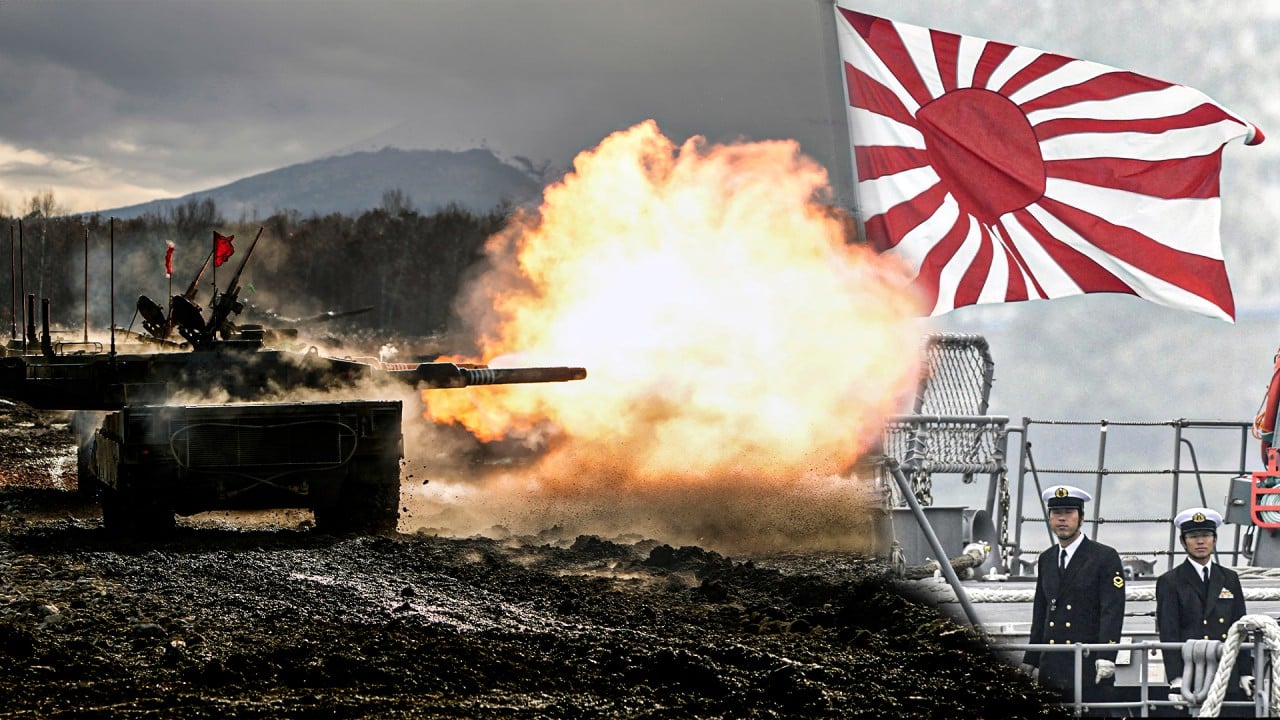‘Signal to China’: US military command upgrade in Japan mark of commitment to region, analysts say
Japan is home to more than 50,000 American troops, but the commander for the US Forces Japan headquartered in Yokota in the western suburbs of Tokyo, tasked with managing their bases, has no commanding authority.
The change in plans will give the USFJ greater capability while still reporting to the US Indo-Pacific Command in Hawaii.

Austin said the command upgrade “will be the most significant change to the US Forces Japan since its creation and one of the strongest improvements in our military ties with Japan in 70 years”.
“We are standing at a historic turning point as the rules-based, free and open international order is shaken to the core,” Kamikawa said. “Now is a critical phase when our decision today determines our future.”
In the joint statement issued after the talks, the ministers said China’s foreign policy “seeks to reshape the international order for its own benefit at the expense of others” and that “such behavior is a serious concern to the alliance and the entire international community and represents the greatest strategic challenge in the Indo-Pacific region and beyond”.
Ryo Hinata-Yamaguchi, an assistant professor of international relations at the University of Tokyo, said the joint command allowed the United States and Japan to work in a much more coordinated and efficient manner.
Together with efforts undertaken with South Korea, the upgraded alliance puts the US, Japan, and South Korea “in a better position to deal with the fluid circumstances in the Indo-Pacific”, he added.
“However, we can expect China, North Korea, and Russia to take their own disruptive measures,” Hinata-Yamaguchi warned.

On Sunday, defence chiefs from the US, Japan and South Korea agreed to a landmark security cooperation framework to institutionalise their trilateral defence ties through efforts such as real-time sharing of North Korean missile warning data and joint military exercises.
Benjamin Ascione, lecturer at the Graduate School of Asia-Pacific Studies in Waseda University, said the new military command was significant as it “sends a powerful geopolitical signal to China about the strength of the US commitment to Japan and the region”.
Apart from aligning with Japan’s own military plans and a coordinated US-Japan approach to defence modernisation, the joint command will strengthen the integration of the two countries’ forces in planning, exercises, and potential combat operations.
Noting that the command structure addressed long-standing concerns about the viability of controlling operations from Hawaii “in a conflict scenario where communications might be disrupted”, Ascione said the actual impact of the new military command would depend heavily on how related issues were tackled.
These include the size and capabilities of the command, its specific powers and authority, and the degree of cooperation with other regional allies such as Australia and the Philippines.
Ascione added that the command paved the way for strengthening Japanese roles and burden-sharing in the alliance, which was a key attack on the alliance raised during the previous administration.

During Donald Trump’s administration from 2017 to 2021, the then US president often said Japan was not paying more for its own defence and security.
Former defence secretary Mark Esper, who served under Trump, said in April that if Trump returned to the White House, he could call on Japan to increase defence spending beyond the 2 per cent of gross domestic product Tokyo had promised.
Prime Minister Fumio Kishida pledged in November 2022 to increase his country’s defence budget to around 2 per cent of GDP starting April 2027.
Ascione said diplomatic efforts remained indispensable, as deterrence alone could not ensure regional stability.
“The military upgrade should be viewed as complementary to, not a replacement for, robust diplomatic engagement with China,” Ascione said.
Yoichiro Sato, a professor of Asia-Pacific studies at Japan’s Ritsumeikan Asia Pacific University, said the bilateral cooperation to strengthen missile production in Japan increased efficiency for the US as it was able to utilise dual-use technology of Japanese firms in defence production.
“Japanese firms benefit from an improved scale of economy in defence production, as weapons systems are increasingly standardised between the US and Japan,” Sato said, noting that the joint statement also specified its focus on the Southwestern Island Chain, a chain of Japanese islands that stretched southwest from Kyushu to Taiwan.
The statement said Japan’s own efforts in the Southwest Islands, combined with alliance exercises, training, posture and other defence-related activities, were expected to enhance “deterrence and response capabilities in this critical region”.
The statement also pointed to greater technical cooperation in areas including cyber, space, electromagnetic and information warfare, Sato noted.
Describing the US-Japan alliance as the “linchpin” of US strategy towards the Indo-Pacific, Sato said the alliance helped anchor US commitments to the region’s security against isolationist voices within the US and in case Washington diverted its attention elsewhere to conflict regions such as the Middle East.
“Given the highly contested rivalry between the US and China, the role Japan plays is a stabilising one for the region,” he added.
However, Chinese state tabloid the Global Times said in an article on Sunday that the boosting of military cooperation between the US and Japan reflected Washington’s intention of “using Japan as an outpost in the Asia-Pacific region to boost its nuclear deterrence to contain countries such as China”.
“[It is also aimed at] elevating the role of the Japan Self-Defence Forces in the US-Japan military alliance,” the daily said.
Citing Chinese analysts, the paper said “this will put Tokyo in the front line of a counter-attack from other countries, including a nuclear conflict”, adding that the enhanced US-Japan alliance was “likely [to] provoke a new round of arms race in tactical nuclear weapons in the region”.
